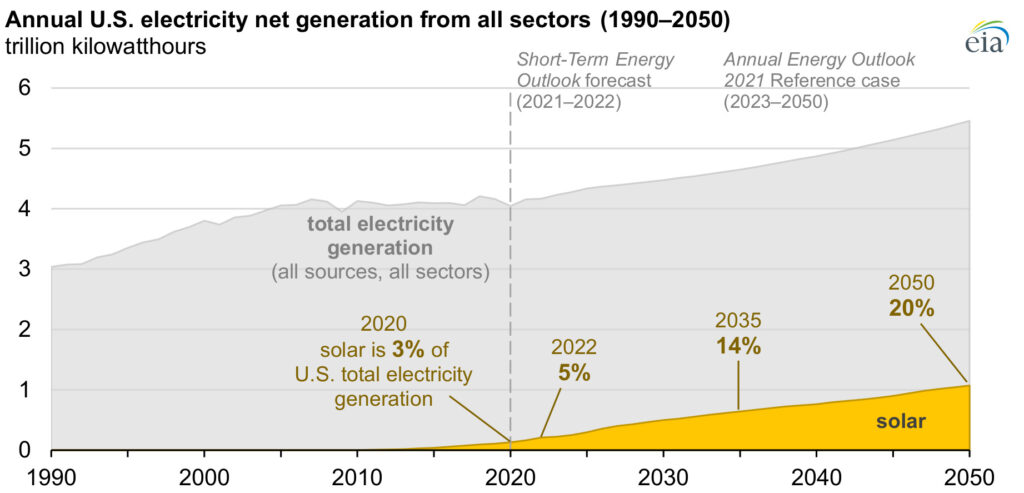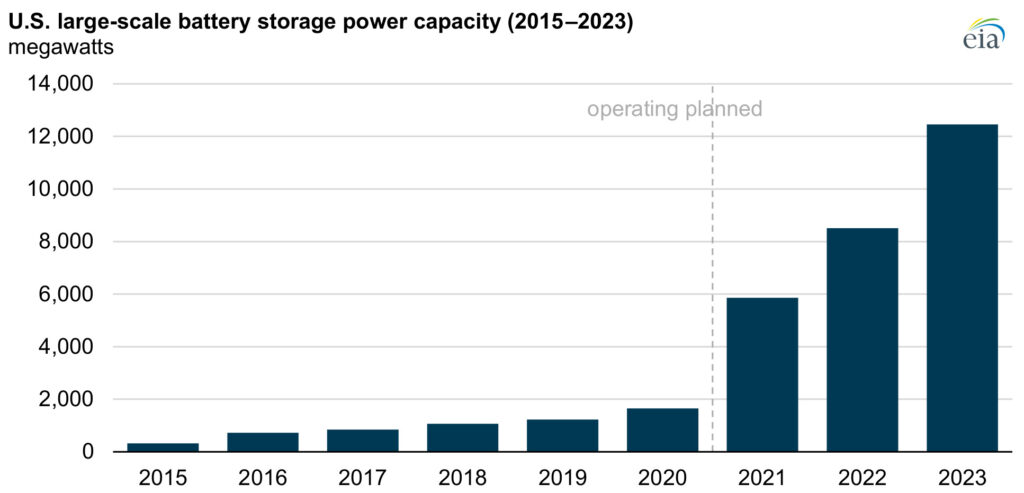In a landmark year for renewable energy, the United States witnessed a remarkable surge in solar capacity installation in 2023. The latest report from the Business Council for Sustainable Energy (BCSE) paints a vivid picture of the nation’s renewable energy landscape, showcasing a significant milestone for the solar sector.
Record-Breaking Growth
The ‘Sustainable Energy in America 2024 Factbook’, a collaborative effort between BCSE and Bloomberg New Energy Finance (BNEF), reveals that the US added an unprecedented 35.3GW of new solar capacity in 2023. This staggering figure underscores the nation’s commitment to transitioning towards sustainable energy sources.

Sectoral Breakdown in USA Solar
Sectoral Breakdown
- Utility-Scale Expansion: A substantial portion of the new solar capacity, totaling 23.7GW, was added in the utility-scale sector. This signifies the growing importance of large-scale solar projects in meeting energy demands.
- Commercial and Residential Contributions: The commercial and industrial, as well as residential rooftop sectors, collectively contributed 11.6GW of new solar capacity. This distributed approach highlights the increasing adoption of solar energy at various scales of consumption.
Solar Surpasses Wind
The report sheds light on an intriguing trend – for the eighth consecutive year, solar installations outpaced wind additions in the US. While wind energy remains a significant player, constituting 44.1% of renewable energy generation capacity, solar is swiftly closing the gap.
Grid Connection Challenges
Despite the impressive growth in solar capacity, challenges persist, particularly regarding grid connections. Grid connection issues have disproportionately affected the wind sector, indicating a pressing need for infrastructural improvements to support renewable energy integration.
Positive Spillover Effects
The report underscores the positive spillover effects of renewable energy expansion, extending to adjacent industries such as manufacturing and battery storage.
Manufacturing Boost
Since the implementation of the Inflation Reduction Act (IRA), the US has witnessed substantial investments in energy manufacturing projects, totaling US$123 billion. Notably, both the solar and storage sectors have seen a surge in manufacturing facilities, with 34 projects in the pipeline.
Battery Storage Growth

Battery Storage Growth
The US experienced a remarkable 28% year-on-year increase in battery storage manufacturing capacity between 2022 and 2023, reaching a total of 114GWh of lithium-ion battery manufacturing capacity. However, challenges remain as China surpasses the US to become the largest storage market globally.
Import Dependence and Overcapacity Concerns
Despite progress in domestic manufacturing, the US continues to heavily rely on solar module imports, raising concerns about supply chain resilience. Moreover, the emphasis on capacity additions over grid infrastructure has led to fears of overcapacity in the solar sector.
Addressing Overcapacity
Antoine Vagneur-Jones from BNEF highlights the risk of overcapacity in the solar industry due to excessive planned investments. This overemphasis on capacity additions underscores the need for a balanced approach that prioritizes infrastructure development alongside capacity expansion.
Conclusion
The surge in solar capacity installation in 2023 marks a significant milestone in the US transition towards renewable energy. While the achievements are commendable, addressing grid connection challenges and ensuring a sustainable manufacturing ecosystem are crucial for sustaining this momentum. By fostering innovation and addressing systemic barriers, the US can continue to lead the way in solar energy adoption and pave the path towards a cleaner, more sustainable future.